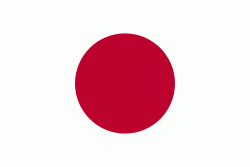Ōmura (Ōmura)
Ōmura (大村市) is a city located in Nagasaki Prefecture, Japan. As of September 30, 2022, the city has an estimated population of 98,237 and a population density of 750 persons per km2. Its total area is 126.33 km2, and it includes Nagasaki Airport.
Ōmura is a castle town, and was the capital of Ōmura Domain, ruled by the local Ōmura clan for over 900 years in pre-Meiji Japan. It was the site of considerable foreign trade and missionary activity during the late Muromachi period, and the Catholic saint Marina de Omura hails from this city. Due to its proximity to the trading settlement at Dejima in Nagasaki, was one of the first areas of Japan to re-open to foreign contact after the end of the national seclusion policy after the Meiji Restoration. In the opera Madama Butterfly, set in nearby Nagasaki, the place name Omara in the line "ed alla damigella Butterfly del quartiere d'Omara Nagasaki" probably refers to Ōmura. From 1868-1945, Ōmura was host to numerous military facilities as part of the Sasebo Naval District, most notably that of a major air base for the Imperial Japanese Navy Air Service. The former naval base was the location of the squalid Ōmura Migrant Detention Center, where mainly Korean refugees—termed "stowaways" (mikkōsha synonymous with "smuggler")—were held until deportation, frequently for several years. Since August 1996 the nearby Ōmura Immigration Reception Center in a modern building serves the same function.
The modern city was founded in 1942 after a town and several villages were municipalized by the prefecture. The city was largely destroyed by American bombing in 1944. After the war, Omura hosted Japan's first motorboat racing event in 1952. Additionally in 1975, the city opened the world's first island airport; Nagasaki Airport which is located offshore in Ōmura Bay. The airport was constructed by reclaiming land on Minoshima Island after the island's residents agreed to relocate to replace the former airport which is now used by the Japan Maritime Self-Defense Force.
Ōmura is a castle town, and was the capital of Ōmura Domain, ruled by the local Ōmura clan for over 900 years in pre-Meiji Japan. It was the site of considerable foreign trade and missionary activity during the late Muromachi period, and the Catholic saint Marina de Omura hails from this city. Due to its proximity to the trading settlement at Dejima in Nagasaki, was one of the first areas of Japan to re-open to foreign contact after the end of the national seclusion policy after the Meiji Restoration. In the opera Madama Butterfly, set in nearby Nagasaki, the place name Omara in the line "ed alla damigella Butterfly del quartiere d'Omara Nagasaki" probably refers to Ōmura. From 1868-1945, Ōmura was host to numerous military facilities as part of the Sasebo Naval District, most notably that of a major air base for the Imperial Japanese Navy Air Service. The former naval base was the location of the squalid Ōmura Migrant Detention Center, where mainly Korean refugees—termed "stowaways" (mikkōsha synonymous with "smuggler")—were held until deportation, frequently for several years. Since August 1996 the nearby Ōmura Immigration Reception Center in a modern building serves the same function.
The modern city was founded in 1942 after a town and several villages were municipalized by the prefecture. The city was largely destroyed by American bombing in 1944. After the war, Omura hosted Japan's first motorboat racing event in 1952. Additionally in 1975, the city opened the world's first island airport; Nagasaki Airport which is located offshore in Ōmura Bay. The airport was constructed by reclaiming land on Minoshima Island after the island's residents agreed to relocate to replace the former airport which is now used by the Japan Maritime Self-Defense Force.
Map - Ōmura (Ōmura)
Map
Country - Japan
 |
 |
| Flag of Japan | |
Japan is the eleventh most populous country in the world, as well as one of the most densely populated and urbanized. About three-fourths of the country's terrain is mountainous, concentrating its population of 124.8 million on narrow coastal plains. Japan is divided into 47 administrative prefectures and eight traditional regions. The Greater Tokyo Area is the most populous metropolitan area in the world, with more than 37.2 million residents.
Currency / Language
| ISO | Currency | Symbol | Significant figures |
|---|---|---|---|
| JPY | Japanese yen | ¥ | 0 |
| ISO | Language |
|---|---|
| JA | Japanese language |















